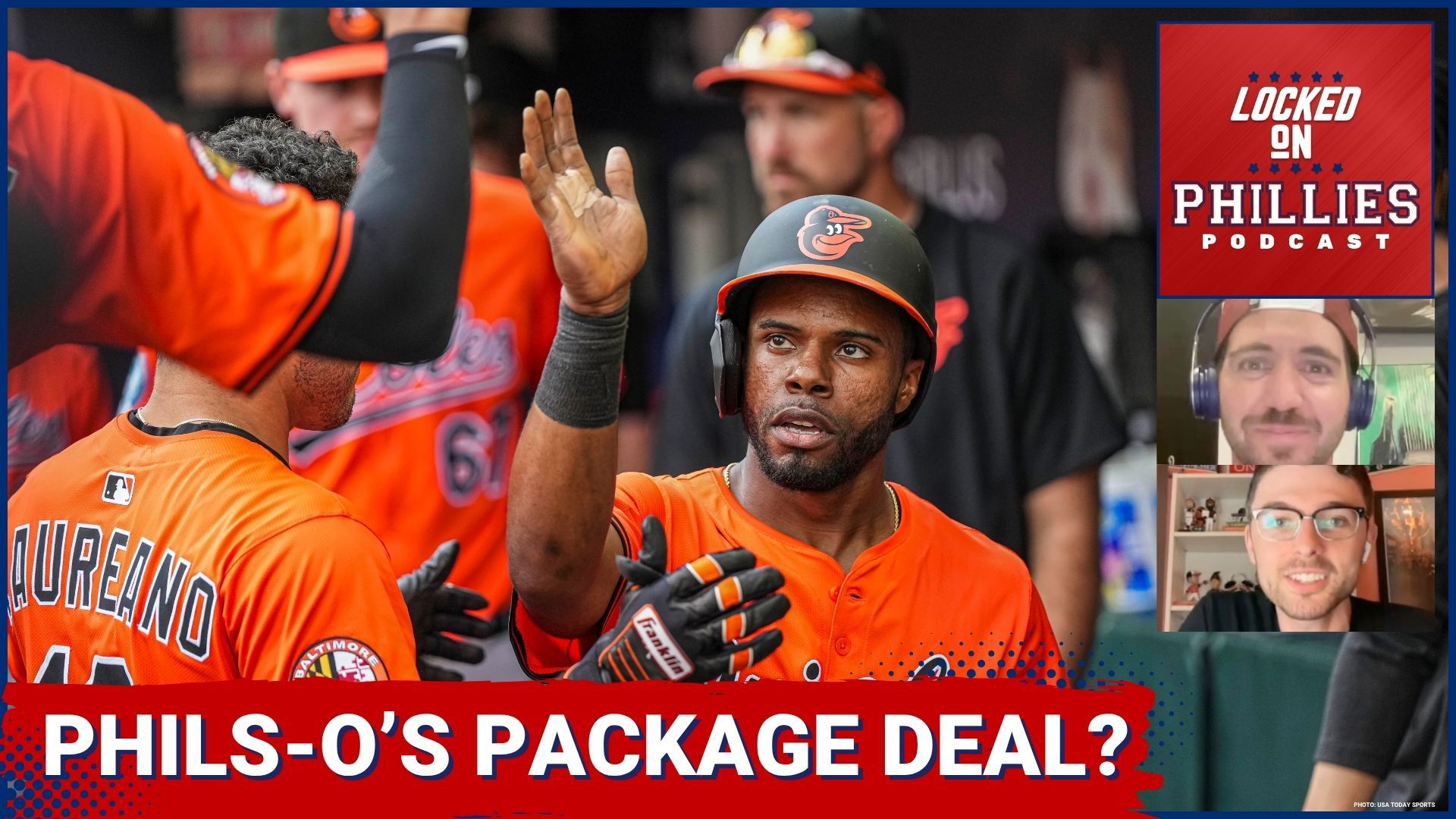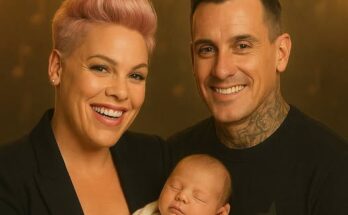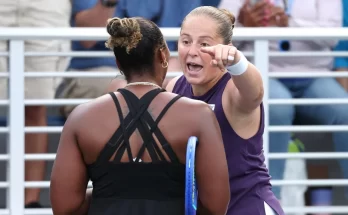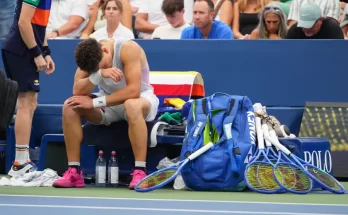Are the Phillies and Orioles on a Collision Course for a Blockbuster Trade?
In baseball, timing is everything. The Philadelphia Phillies and Baltimore Orioles may be in completely different stages of their organizational life cycles, but that doesn’t mean they can’t find common ground. In fact, as the 2025 season unfolds and both teams push toward October for very different reasons, the question becomes impossible to ignore: could these two clubs be the perfect trade partners?
At first glance, the idea seems almost too logical. The Orioles are loaded with young, controllable position players and prospects, the byproduct of years spent rebuilding from the ground up. Their farm system, while slightly less dominant than it was at its peak, still boasts depth, and their major league roster features multiple young hitters who could start for almost any team in baseball. On the other side of the equation sit the Phillies, a win-now powerhouse with one of the most expensive and star-studded rosters in the sport. They’re built to contend today, not tomorrow, and they’ve shown no hesitation to push chips in when the window is wide open. The contrast in priorities between these two franchises is precisely what makes the trade conversation so intriguing.
For Baltimore, the challenge is no longer relevance—it’s sustainability. After breaking through as a legitimate contender, the Orioles have to keep pace in an unforgiving American League that features the likes of the Yankees, Astros, and a surging Mariners squad. They’ve built a lineup that can score with anyone, but their Achilles’ heel remains the same: pitching depth. Even after investing in player development and making incremental moves to solidify the rotation, questions persist about whether Baltimore has enough high-end arms to survive the grind of October baseball. They can score seven runs on any given night, but what happens when they run into a team with three aces and a lockdown bullpen in a best-of-seven series?
That’s where Philadelphia enters the conversation. The Phillies’ rotation remains one of the deepest in baseball, anchored by Zack Wheeler and Aaron Nola, with emerging arms that could slot in as legitimate difference-makers for other clubs. Beyond the rotation, Philadelphia’s organizational philosophy has always been aggressive when opportunity knocks. They’ve shown it in the free-agent market, they’ve shown it at the trade deadline, and they’ve shown it in their willingness to leverage minor league depth to keep the big-league club stocked with stars. That makes them an ideal trade partner for a team like Baltimore, which has offensive assets to spare but needs help in the arms race.
Of course, this conversation works both ways. For Philadelphia, there’s always a need for flexibility and depth, particularly when it comes to position players who can lengthen a lineup or provide insurance against injury. As strong as the Phillies’ core is, they aren’t immune to the realities of a long season. Adding a young, versatile bat from Baltimore’s stash could not only protect against attrition but also keep them ahead of the curve as some of their veteran contracts age. Imagine the impact of injecting a controllable player with speed and on-base skills into a Phillies lineup that already boasts Bryce Harper, Trea Turner, and Kyle Schwarber. It’s the kind of move that could tilt the balance in a tight NL East race or even shift the dynamics in October.
The framework for a deal practically writes itself: Baltimore sends a young hitter—maybe someone blocked by a crowded depth chart—in exchange for a Phillies arm who’s either major-league ready or just on the cusp. Names like Jordan Westburg, Colton Cowser, or Heston Kjerstad will inevitably surface in speculation, though prying any of those players loose would require a significant return. On the pitching side, the Orioles could set their sights on someone like Ranger Suárez, or even one of the Phillies’ top pitching prospects, depending on the scale of the trade. These aren’t small moves—they’re blockbusters, the kind that alter the trajectory of both clubs and make waves across the league.
Financial dynamics also play a role in making this pairing so logical. The Orioles, still operating with one of the more modest payrolls in the league despite recent upticks, have the advantage of cost-controlled talent. That gives them flexibility to absorb a veteran arm if necessary, even one with a substantial salary, provided the years of control align with their competitive window. The Phillies, on the other hand, have already committed massive dollars to their core, and while they’re no strangers to stretching the budget, finding ways to offset long-term obligations by integrating young, affordable hitters could be an appealing secondary benefit of this kind of deal.
There’s also the intangible factor: ambition. Both of these organizations are hungry. Philadelphia is desperate to deliver another parade down Broad Street before the current core begins to decline. Baltimore, after years of being an afterthought in the AL East, now finds itself on the cusp of something special and knows opportunities like this don’t last forever. That urgency can be the catalyst for creativity, for bold decisions that go beyond conventional thinking. And make no mistake, this would qualify as bold. Pulling off a crossover deal between two contending teams from opposite leagues isn’t easy. It requires trust, vision, and the willingness to absorb criticism if things don’t pan out as expected. But the payoff, if it works, is enormous.
Fans on both sides would have strong opinions, and understandably so. Orioles faithful might balk at parting with a beloved young player after waiting so long for this core to arrive. Phillies fans, meanwhile, might flinch at giving up pitching depth in a sport where you can never have enough of it. Yet history shows that championships often belong to the teams willing to take calculated risks. The Braves trading for Matt Olson. The Astros parting with premium prospects for Justin Verlander. The Dodgers landing Mookie Betts. These moves aren’t safe—they’re necessary for teams committed to winning it all.
As for timing, the most obvious window is the trade deadline, though preliminary conversations could begin much earlier. Both teams will want clarity on their positioning before making any seismic decisions. Injuries, performance trends, and standings will dictate the urgency, but the groundwork for a blockbuster is often laid months before the headlines hit. Front offices will weigh scouting reports, analytics, and projections, balancing short-term gain against long-term cost. For Baltimore and Philadelphia, the equation is simple: how much is a championship worth?
Could the Orioles and Phillies actually pull the trigger on a deal of this magnitude? It’s impossible to say for certain, but the logic is undeniable. Their needs align in a way that few teams do, their competitive timelines intersect perfectly, and the potential upside is massive for both sides. In an era where parity reigns and small edges make big differences, partnerships like this can change everything.
So as the season marches on and rumors start to swirl, keep an eye on Baltimore and Philadelphia. It might just be a matter of time before these two clubs decide that the perfect trade partner has been staring them in the face all along.



